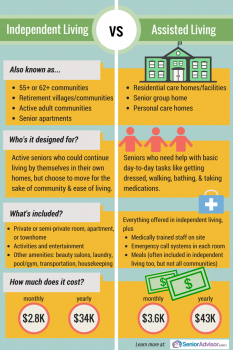Choosing the right care option for yourself or a loved one can be a challenging decision. Two popular choices in elderly care are assisted living facilities and in-home care services. Both options come with their own set of pros and cons, and it’s important to understand them before finalizing any decision. This article aims to highlight the advantages and disadvantages of both assisted living and in-home care.
Assisted Living
Pros
Assisted living facilities offer a range of benefits: Professional Care: Assisted living facilities have trained staff members who provide round-the-clock care and assistance. Social Interaction: These facilities promote socialization, allowing seniors to interact with their peers through various activities and events. Safe Environment: Assisted living communities are designed to ensure the safety and security of residents, reducing the chance of accidents or injuries. Access to Healthcare Services: Many assisted living facilities have on-site medical professionals or access to healthcare resources, ensuring that residents receive prompt medical attention. Convenience: Assisted living takes away the burden of housekeeping, cooking, and other daily chores, allowing seniors to focus on enjoying their lives.
Cons
While assisted living has its advantages, there are also some potential downsides: Cost: Assisted living facilities can be expensive, and depending on the location and level of care required, the costs may not be covered by insurance. Limited Independence: Living in a community setting may result in a loss of certain aspects of independence and privacy, as individuals may need to adhere to the facility’s rules and regulations. Transition Challenges: Moving to an assisted living facility can be emotionally difficult for some seniors, as it involves leaving their familiar surroundings and adapting to a new environment.
In-Home Care
Pros
In-home care has its own set of advantages: Comfort and Familiarity: In-home care allows seniors to remain in the comfort and familiarity of their own homes, surrounded by their belongings and memories. Customized Care: In-home care services are tailored to meet the specific needs of each individual, providing personalized attention and support. Flexibility: Unlike assisted living, in-home care allows seniors to maintain control over their daily routines, including meal schedules and other activities. Cost: In some cases, in-home care can be a more affordable option for seniors, especially if they have a supportive network of family and friends.
Cons
However, in-home care also has its downsides: Loneliness: Seniors receiving in-home care may experience feelings of isolation due to limited social interaction, especially if they do not have a strong support system. Dependency: Relying on in-home care can lead to increased dependency on caregivers, which may pose challenges if the caregiver becomes unavailable or requires an extended absence. Home Safety Concerns: Aging at home may come with certain risks, such as falls or difficulties in accessing essential healthcare services, that could impact the overall well-being of the individual.
Conclusion
Ultimately, the decision between assisted living and in-home care depends on individual circumstances, preferences, and the level of care needed. It is recommended to explore all options thoroughly, considering factors such as health conditions, finances, and the availability of support systems. Consulting with healthcare professionals and family members can provide valuable insights to make an informed choice that ensures the best quality of life for seniors.
